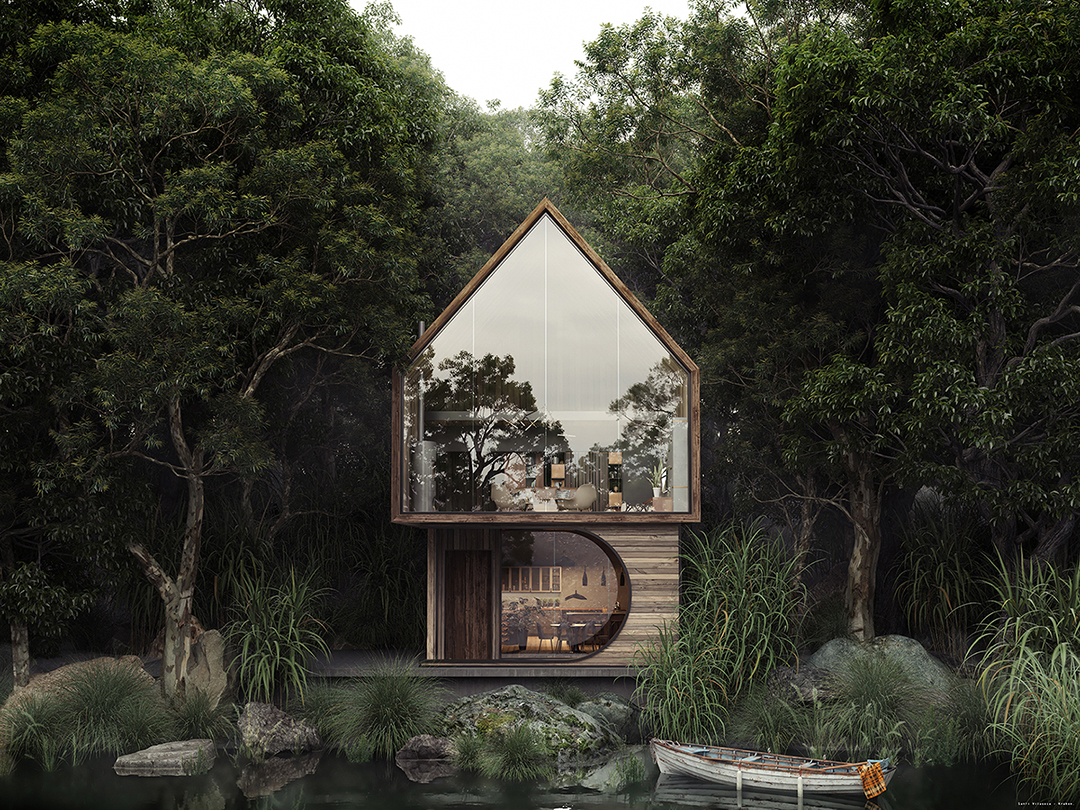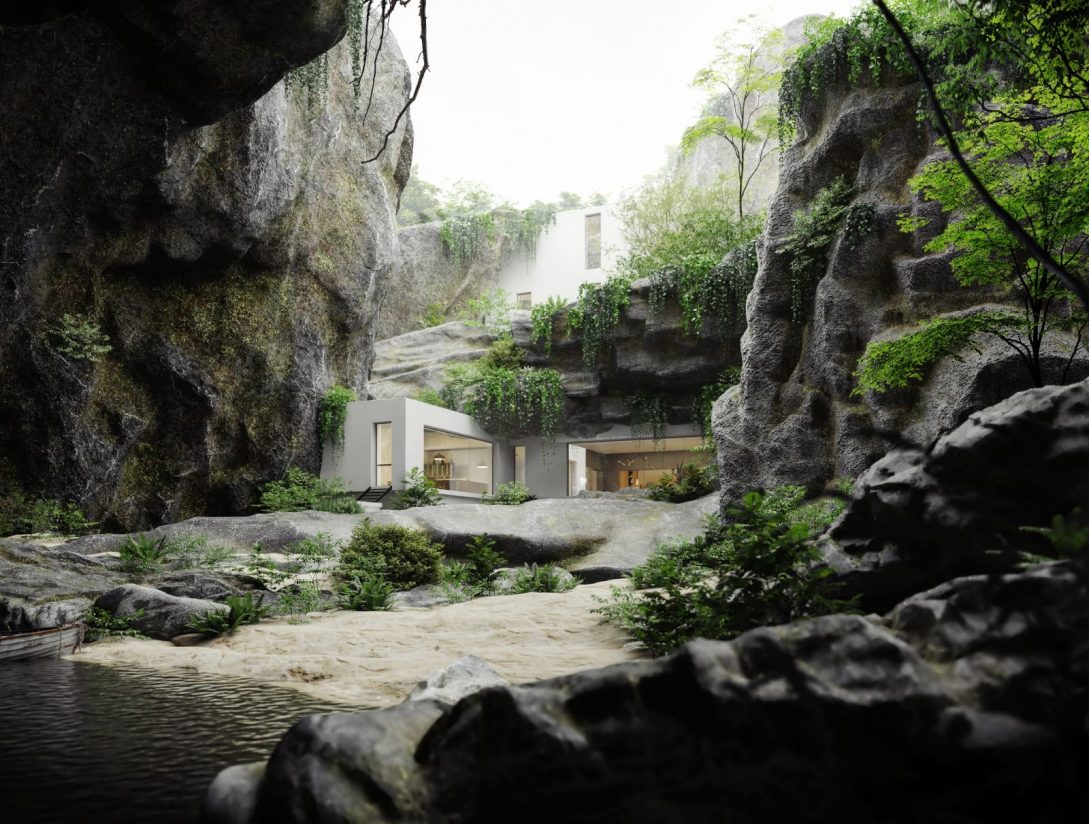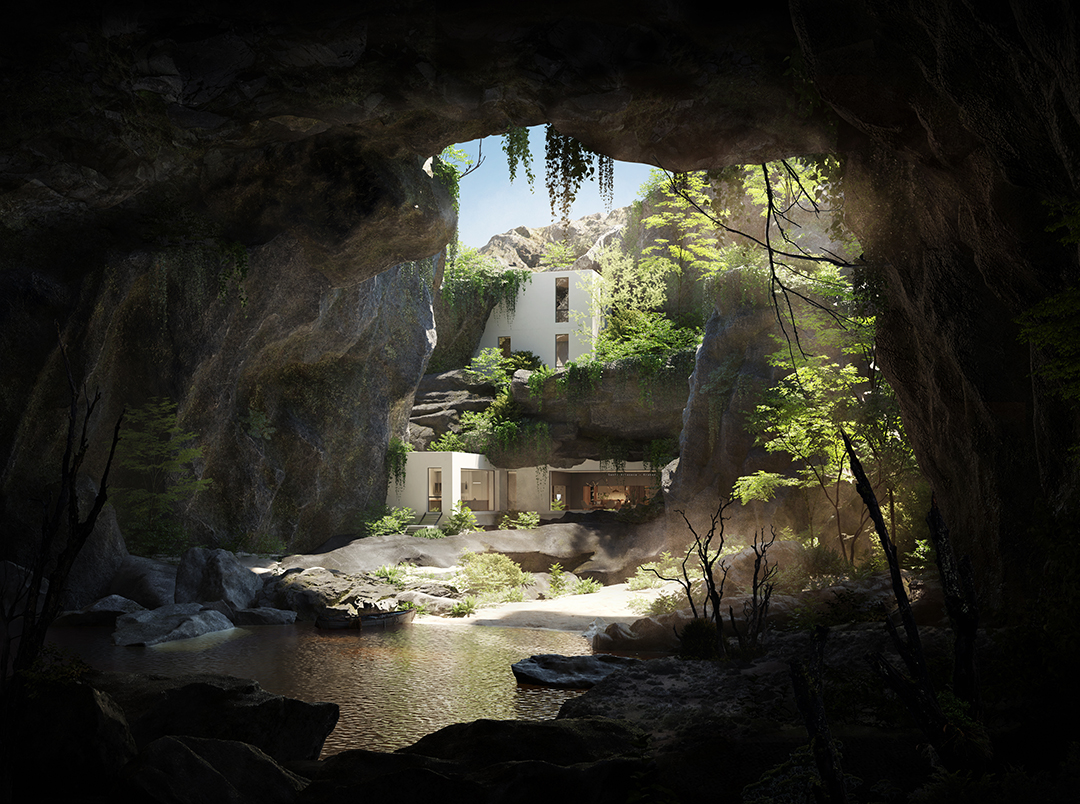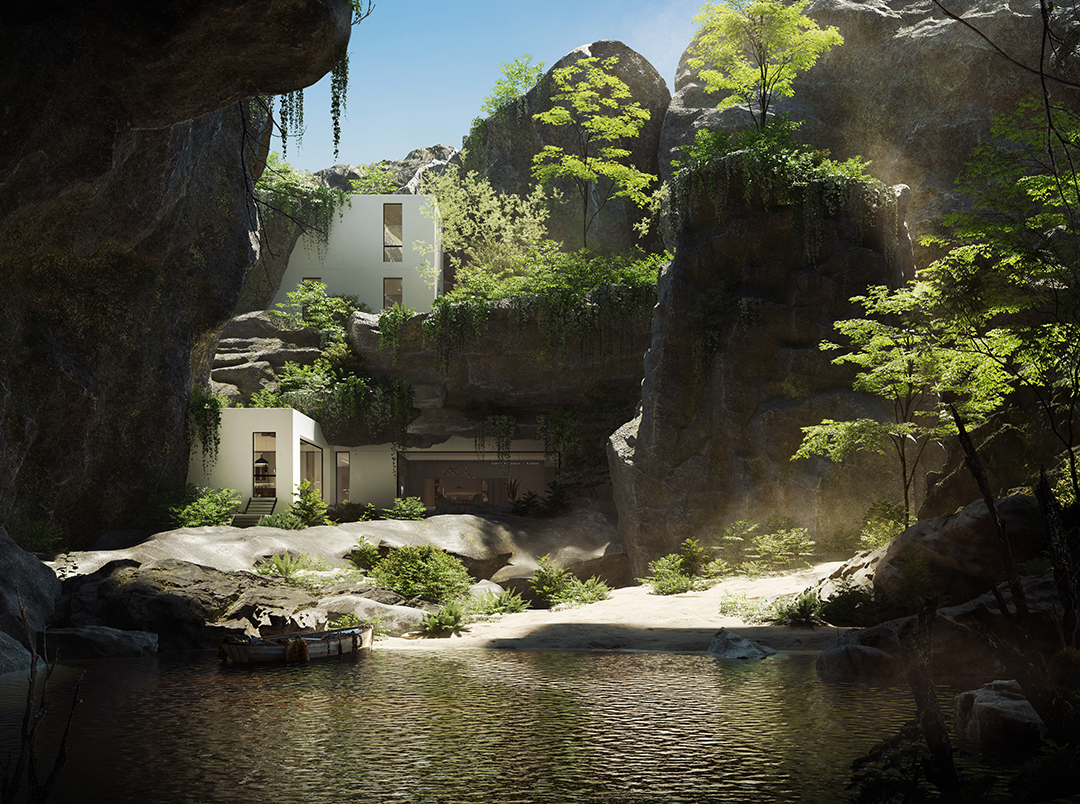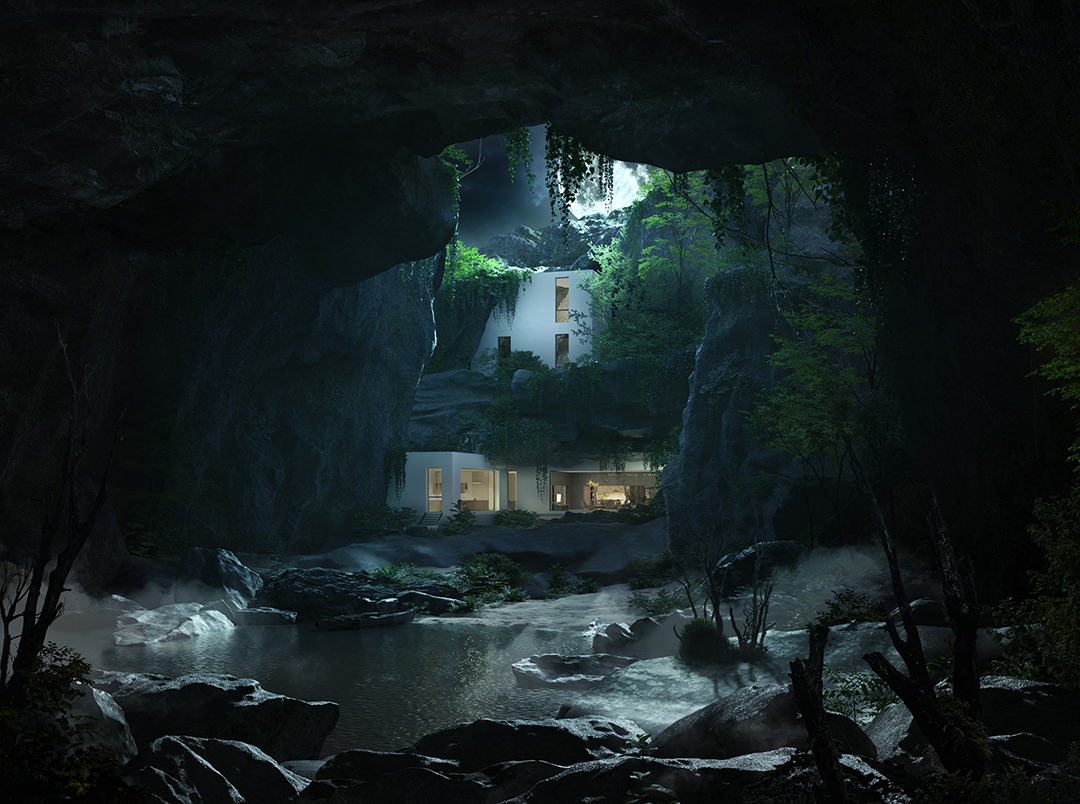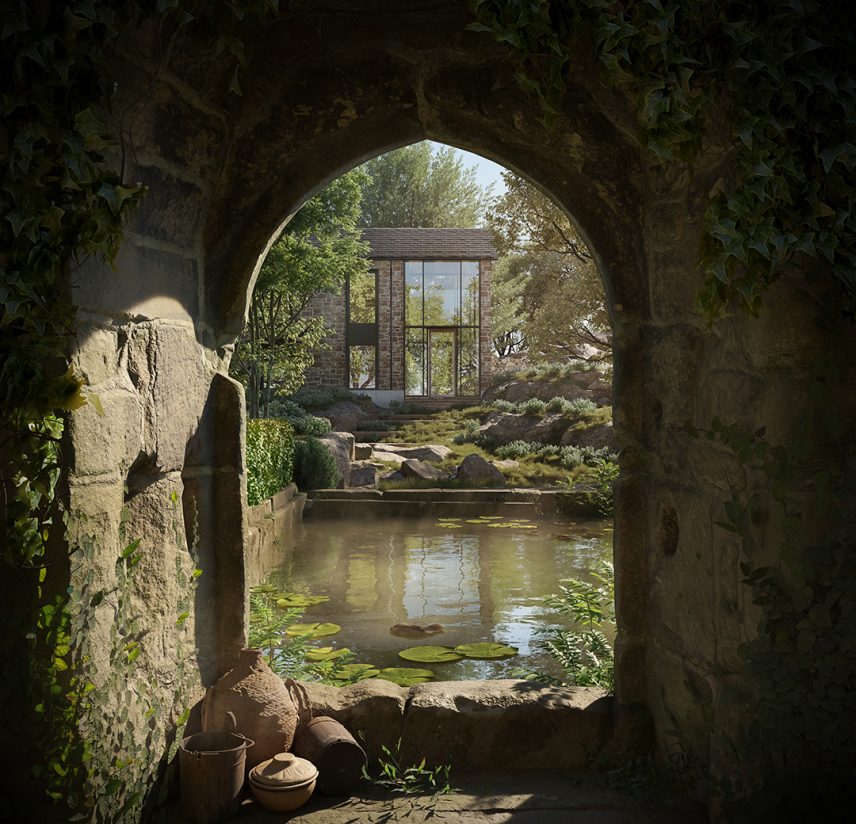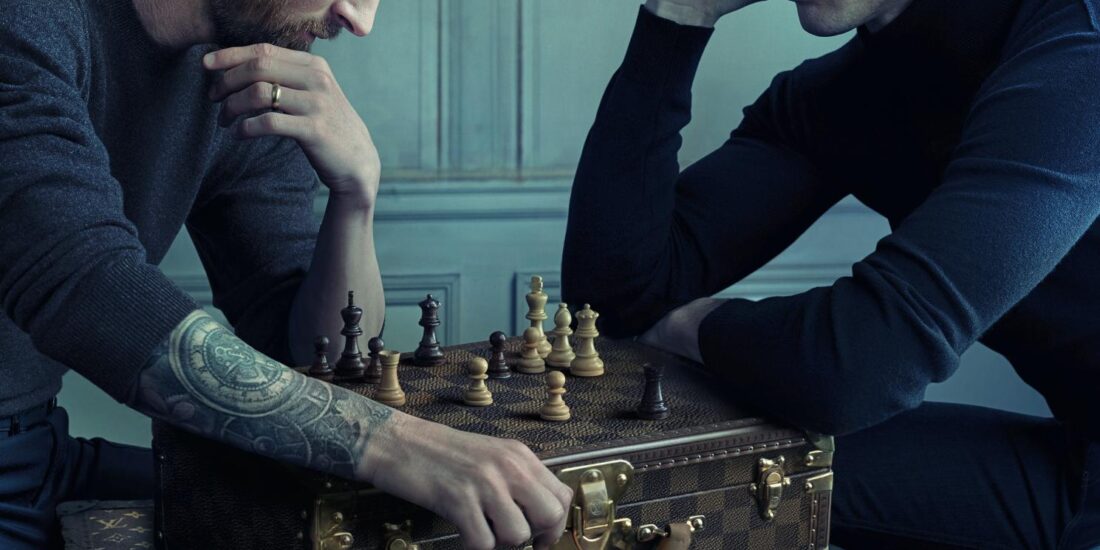Release the KRAKEN
A chat with multimedia graphic artist Santiago Vilaseca on rendering architectural ideas to life…
“My personal interpretation is to fully unleash our own potential, do away with any limitations, step out of our comfort zone, and overcome all obstacles. This was the time when I realised that I didn’t want to work for someone else anymore, and I needed to release my own kraken!”
Santiago Vilaseca
Multimedia Graphic Designer
Founder of Kraken-Studio
It’s an unlikely chain of events that led Santiago Vilaseca to set up KRAKEN with his wife and business partner Selene Ponchel in Paris in 2013. “I honestly never really thought about pursuing a professional career as a 3D artist. I simply let myself be carried away by what I enjoyed doing. With hindsight, it totally makes sense that I ended up exactly where I am, but I never planned for it,” he says.
KRAKEN provides architectural visualisation services – from still images to 3D animations – mostly for architects and real estate developers worldwide. They work on all kinds of projects and at all scales. “What matters to us is the original artwork that we can reveal in each of them. This is our mission,” says Santiago, referencing collaborations with brands like Louis Vuitton and Shulman Associates, and projects across France, Argentina and the U.S.
Speaking about his early days as an artist in his home country of Argentina, he says, “Indeed, I have always been passionate about drawing and when I discovered video games, a whole new world opened up for me. I began buying drawing software and books on the topic. It was frustrating at first, because back then we didn’t have all the tutorials and online resources available now.” But he followed through, certain that he needed to learn these computer tools in order to explore his creativity.
Until he arrived in France seven years ago, he had largely been self-taught (except for a stint at a multimedia arts schools in Buenos Aires), practicing on his own, experimenting with different techniques and going through the usual trial and error, which is an integral part of the process. In Paris, he enrolled for an advanced class where he could finally meet and speak directly with tutors, and have instant feedback from other professionals. It was immensely helpful, he says, because the greatest challenge for 3D artists today is keeping up with an industry moving very fast without suffering from information overload.
 When he and his partner decided to set up a multimedia studio, he indulged his whimsical side to come up with a name and also its guiding principle. “We chose to call ourselves KRAKEN, like the legendary sea monster, a giant octopus that attacks the ships of any mortal foolish enough to wander into its domain. I personally enjoy letting my imagination run wild and immersing myself in worlds of fantasy, old myths and science fiction. One of my favorite fantasy movies is ‘Pirates of the Caribbean’ and I always loved the quote “release the kraken”. My personal interpretation is to fully unleash our own potential, do away with any limitations, step out of our comfort zone, and overcome all obstacles. This was the time when I realized that I didn’t want to work for someone else anymore, and I needed to release my own kraken!”
When he and his partner decided to set up a multimedia studio, he indulged his whimsical side to come up with a name and also its guiding principle. “We chose to call ourselves KRAKEN, like the legendary sea monster, a giant octopus that attacks the ships of any mortal foolish enough to wander into its domain. I personally enjoy letting my imagination run wild and immersing myself in worlds of fantasy, old myths and science fiction. One of my favorite fantasy movies is ‘Pirates of the Caribbean’ and I always loved the quote “release the kraken”. My personal interpretation is to fully unleash our own potential, do away with any limitations, step out of our comfort zone, and overcome all obstacles. This was the time when I realized that I didn’t want to work for someone else anymore, and I needed to release my own kraken!”
Sélène, as an architect, is in constant communication with the clients, who are mainly architects. She manages the team and takes care of administrative work, while Santiago is more focused on the production, and in translating architectural projects into a strong emotive visual narrative. “Most clients approach us with their own story already in mind and just want us to realize that vision,” he says. “All of our work aims at helping them to choose what they want to say, to step back from their project and focus on what’s important, and to trust us to communicate it properly.”
To ensures creativity and a permanent level of quality, Santiago works in parallel on many personal projects. “Indeed, my artwork directly feeds into my professional work and ensures the sort of constant renewal that is absolutely essential to KRAKEN’s development,” he says. “I draw inspiration from all things around me in my daily life as well as in my travels. As I play guitar and drums, music is another invaluable source of inspiration for me, another way to express myself, my emotions, helping me to look at the world from a different perspective.” The lockdown has given him more time to devote to these personal projects, work without a schedule or expectations, and to express KRAKEN’s true identity.
At work, many projects have been put on hold which scared them first, he says. “But then, we took it as an opportunity to step back and think about the work we have done so far, and the paths we have taken. In our profession, we rarely have time to do so. We’re too often under heavy time pressure with overlapping projects, so it feels good to slow down and take a breath.” They have also been receiving lots of requests lately to make tutorials, online courses and share more of the creative process. They are working on it now and are hopeful of coming up with something soon, says Santiago.
THE CREATIVE PROCESS
- The creative process starts with a sketch based on an initial discussion with the client or a transposed idea.
- The 3D model is built, over which the environment and then, the architecture are created.
- Once the digital model is done, it is tested and materials are applied to it.
- The next and key step is the camera selection and light settings. White or grey color are used on all surfaces so as to focus on shadow projection, enhance the architectural volumes and make a nice composition.
- The details are worked out and when the image is ready, it is rendered.
- The last step is the post-production to add a special touch of magic to the image.
A QUIET PLACE TO QUARANTINE
Santiago says that preserving nature in architecture is a leitmotif in his personal work. “I always felt attracted by buildings that minimize visual impact and cleverly integrate their structures with the natural context,” he says adding that he has been exploring this more and more through his artwork since the lockdown. “Amid the climate emergency challenges, architecture has a real potential for playing a positive role in the future, for creating places healthier and more ethical in their relationship to nature,” he adds. Below are some of his pet projects, a series of cabins set in different surrounding – arresting architectural designs visualized for imagined spaces.
LAKE HOUSE
Lake House, conceptualised at the commencement of the lockdown, confronts us with this unprecedented challenge of rethinking our relation to the natural world. I always loved the idea of building my own cabin in the wild, an escape from the hustle and bustle of our lives and somehow unaffected by time. It made perfect sense in the context of the outbreak. After it went viral, broadcast around the world through Instagram aggregators, I started sharing more of my personal projects.
CASA TRI
Casa Tri came right after Lake House, in the middle of the quarantine, reflecting my hopes and fears for these uncertain times. This is a little house, no more than what I would actually need. Build at a height to carefully observe the troubled waters surrounding it, here everything seems strangely quiet and invites introspection. With this image, I won the 3D Artist of the Month contest run by RebusFarm.
ESCAVE HOUSE
Escave House is a safe haven, a secret and peaceful place to escape the frantic pace of everyday life and experience the untouched beauty of nature. The architecture blends in with the surrounding landscape, a rocky hillside that we discover at the mouth of a cave. The light shapes nature, space and architecture, inviting us to approach the house and wonder what it would be like to live in it.
OGIVE
In this image, the composition is especially important: the sharply-arched window is like a stone frame to discover the house, creating a contemplation point. In harmony with its natural environment, the architecture is made of this same old, natural stone to appear as a seamless extension of the surroundings. With this project, I sought certain anonymity of the house in front of the vegetation and peaceful views.
FRAGMENTS
Fragments is a modern design aiming to cause minimal disturbance to its dry habitat. The house is made of concrete fragments, with an offset arrangement, overlapping to create a series of spaces in between for the residents to enjoy the outdoors. In my designs, I’m always looking for uncomplicated volumes, natural materials and relaxing spaces, offering panoramic views of the landscape. I believe that nature activates architecture, adding life and light to immerse us in its stillness.
INTERVAL
Interval going viral reflects a growing desire for more subtle and harmonious interventions, I feel. This house, nestled between earth and sky, is like a bridge to reconnect with the natural world, an invitation to revive our awareness of ecosystems. Based on a holistic approach, the design let us feel the presence of the living world around us.



